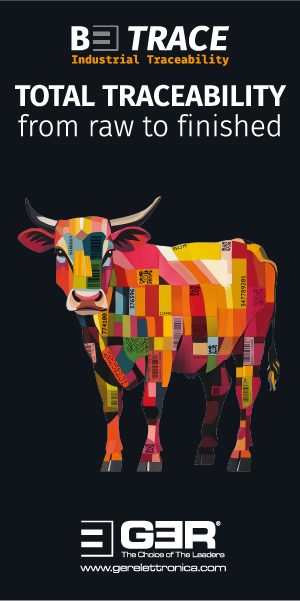Market Intelligence - 12.10.21
Macroeconomics
In the German elections, there was no clear winner and instead various coalition possibilities have emerged. The most likely is probably a variant that will push the country significantly to the left after the Merkel era and push climate policy with all its consequences far up the list of priorities.
This trend is in line with the zeitgeist and is likely to further increase tensions within the EU.
In the UK, the after-effects of leaving the EU continue to be clearly felt. A lack of lorry drivers led to supply shortages initially at petrol stations. However, there is a risk that this could spread not only to transport but also to many other sectors of the economy. There is quite simply a lack of labour, which in the past was covered by people from the EU. Incidentally, this is a development that can also be seen within the EU, even if it has not yet reached the same proportions.
China also contributed significant information in the past two weeks. The extreme financial difficulties of major real estate developers are challenging the Communist Party and one can be assured that the entire Chinese leadership is currently looking for a way out in order to prevent a spill-over into the entire economy. Large defaults in this sector would have very far-reaching, if not devastating, consequences on the overall economy in China. The Western world is still betting on the Chinese government not allowing a collapse. Even if a collapse were to happen, the feeling is that Western financial systems would not be threatened.
Of more immediate concern and easier for the general public to grasp are the energy supply problems in China. In many provinces, there are interruptions in the electricity supply and this sometimes severely restricts production and public life. There is a lack of sufficient coal supplies and massively rising prices for energy raw materials have brought many utilities in China to the end of their financial resources. All this at the beginning of the winter season. The government has called on miners in China to increase production very quickly. There are worries that there will not be the desired blue sky over Beijing for the 2022 Winter Olympics.
With regard to energy supply, India should not be forgotten. In India, too, considerably increased prices for coal and energy supply problems have begun to have an effect on the private sector. It may be hard to believe at the moment, but an energy crisis cannot be ruled out, especially since the further policy of OPEC+ oil producing countries is equally unpredictable. The supply of renewable energies is still far from sufficient to satisfy the world’s hunger for energy.
The global dependence on the consumer goods production capacities in Asia is also evident after the weeks of production disruptions there. There is a lack of supply in an incredible number of sectors. The continuing unresolved transport problems add up and this means that even with a quick normalisation, supply and product flow will be a long time returning to normal. For younger people, it will be an interesting new experience to realise that while there will be no immediate shortage, the availability of any product, at any time and in many varieties, can hardly be guaranteed for the months ahead.
Leather Pipeline
Although much of Asia was on holiday for almost a week in late September, discussions in the leather industry among suppliers and customers have been very intense.
If you take a closer look at the situation, you can name three developments at the moment that have emerged as particularly decisive. These can influence the markets emotionally and this can happen very quickly, but we must consider the time factor when taking a closer look. Trigger and effect, as we know, are never in sync and this is also true of the current situation.
First, we are dealing with the effect of the significant production problems in the automotive industry. A positive order intake since the summer of 2020 and the recovery of production led to supply bottlenecks for various materials being underestimated for too long. Although the automotive industry believes it has excellent control over its suppliers and supply chains, questions arise over how correct their information has been and if suppliers have presented the situation too positively. There is also the possibility of the truth being suppressed for a very long time in the automotive industry. The fact is that car production has declined significantly and this trend has accelerated considerably since the second quarter of 2021. What good is a well-filled order book if you cannot manufacture the products, hand them over to the customers and invoice them?
For the leather industry this is a particularly annoying situation. Automotive leather could be manufactured and delivered without difficulty and in the desired quantities. The order situation of the major automotive leather suppliers was and is good and they have stocked up on raw materials accordingly, based on the order situation. They have kept production running at the appropriate levels. However, it has been apparent for months that orders were not the same as customers accepting all the materials tanners were producing. This did not lead to any major consequences or unrest until the summer. The summer holidays then offered the opportunity to put the problem and the question to one side, but since September it has become clear that nothing will change in the near future for various reasons.
In the first half of 2021, expensive models with high leather content were taking priority; they earn more and tend to go to important markets. With car production falling rather than rising, some manufacturers have had to make the decision to adjust their production to realities. Based on the hard facts available, there will certainly be no significant improvement by the end of this year. This also means that it will take quite some time before the stocks that have been built up in the meantime are processed.
What is important in this consideration is that we have a problem of timing here. This is not a lack of demand or orders, but a limitation in production possibilities. Thus, it can be assumed that at some point, of course, it will be solved.
For the raw material market, on the other hand, it is a big problem, because raw hides are produced every day and, especially in Europe, producers have become accustomed to problem-free, just-in-time delivery. The congestion that now threatens is then classically answered with corresponding price reductions. The more the price falls, the more the raw material is used for alternative products.
This would be unremarkable if the industries along the supply chain were able to discuss a joint solution. However, despite all the knowledge in the leather pipeline, this has never happened. Until now, it has always been the case that people only argue about the price. There have also been phases in which the raw material that automotive tanners need to use became so cheap that it flowed off into other channels and markets immediately. Much to the annoyance of those who so urgently needed these hides later.
The second big problem is the situation in the transport markets. Today, it is impossible for anyone to plan reliably the dispatch and arrival of goods. Even goods that are already on their way are delayed and postponed again and again. This doesn’t change anything in the balance between supply and demand, but congestion always has a price effect in commodity markets. In extreme cases, we hear of goods for overseas shipment possibly arriving for loading in October, but then not arriving at their destination until January. This leaves its mark on necessity and inventory planning. If the delivery time doubles, the demand also doubles at the beginning, and producers fill up their warehouses accordingly.
Along the supply chain, goods are bought and sold, but are still not available for production on time, which, in addition to all the other problems, is also a burden on financing. According to a realistic assessment, we can assume that the situation will accompany us well into next year.
The third major problem we see is the general question of how leather will be used in the future. While the first two problems are merely temporary and will thus be resolved in one way or another in the future, we are dealing here with something much more threatening.
The situation of the use of leather in the automobile industry have been widely discussed. In the process, it has been somewhat pushed into the background that well-known shoe manufacturers and even important brands in the luxury goods industry have also been flirting with the replacement of leather. Arguments that leather is a natural product, part of the circular economy and a naturally available raw material that is made from by-products have not caught on in mainstream media.
For the users of leather, this has two consequences, apart from cost: the production problem and the volatility of the markets. These can make alternative materials seem like a better option. We do not want to be misunderstood at this point. The majority of consumers worldwide are not yet concerned with these issues at all. But the fact remains that, in the end, the customer can only buy what is offered by producers and niches then play only a small role in the overall picture.
At the moment, and this will certainly be the case for the next few years, there is no alternative material available in sufficient volumes that can meet the requirements of environmental friendliness. At the moment, the industry is only juggling with plastic, which is sometimes given the label ‘recycled’ using very dubious methods. The alternative plant-based materials are still very much in their infancy and will certainly not be able to displace leather on the mass market in the foreseeable future.
The leather-consuming industries and the big brands in Europe and the US are making the crucial mistake of allowing leather to fall more and more into disrepute without being able to offer a convincing alternative at the same time. How this serves their credibility is their problem, of course, but it in no way supports the planning basis for the tanneries in terms of investments and strategy.
Nobody knows today if leather will lose market share in mass processing. Nobody knows today when the success of meat substitutes will be so great that they will seriously affect animal production. All we know at the moment is that research into meat substitutes is being carried out and that some variants are beginning to establish themselves on the markets. We also know that, without zero allocation, it will be very difficult for leather to maintain its position in many products if manufacturers want to reduce their CO2 footprint. Besides all the other problems, leather could fall victim to other materials for this reason alone. That would be simply wrong, but the outlook is far from positive.
If we do not succeed in the short term in securing the status of leather, positively influencing the discussion among manufacturers and the public, then there is much to suggest that we will have to reckon with a shrinking of leather production and leather use in the second half of the current decade. Leather will always remain, but no one would be surprised if it lost considerable ground in mass-produced consumer goods. The experience of recent years in the field of sheepskins, where this development has already taken place, may serve as an example and warning.
The constantly increasing expenditure on documentation, which is demanded by many organisations from the leather industry today to secure and strengthen the position of leather in the market, can also be seen quite critically. Costs will rise considerably as a result, so that leather will lose competitiveness without any guarantee that finished product companies will commit to the material in the long term.
The raw material markets have been under further pressure in recent weeks. Cattle hide prices have now been in retreat since the second quarter after a massive increase since the previous summer. Supply markets with high slaughter rates and low local leather production have come under particular pressure, while other origins with lower seasonal slaughter levels and higher regional leather production have felt less pressure. The transport issues also play a major role because, in the current situation, closer and faster is definitely better than further away. Translated, this means that prices in the US have dropped significantly, while prices in Australia and Europe have been able to defend themselves better overall.
Nevertheless, considerable uncertainty is now building up, especially in Europe. Should the automotive tanners and the automotive industry not be able to maintain the flow of leather, then the increasing slaughter, especially of a heavy males, will sooner or later become a problem. The system is no longer suited to intermediate preservation and storage, as we saw last summer.
For the leather industry, this is an unpleasant situation. Increased costs have to be compensated. Price negotiations are already difficult enough; a debate with customers about falling hide prices really comes at an inopportune time now. Raw material prices were clearly too high in the summer and an adjustment was necessary, but it should take place in an orderly fashion and in everyone’s interest.
The split market is not offering much news. In leather production, speciality items remain in good demand, bulk products face the same problems as hides and collagen and gelatine producers will now certainly have to watch what happens to production in the leather industry during what should be a strong production period.
The same applies to lamb, sheep and goat skins. Fine, light, high-quality raw materials continue to experience good demand. In the fashion sector, lambskin products have a good market at the moment. News from various sources indicates that, especially in the cold regions of eastern Europe, people are slowly turning back to well-known materials. Materials made of plastic and insulation made of artificial microfibres may have support from big brand names, but people have increasingly found that warm feet and comfort can still be achieved most successfully with natural materials. Artificial materials do not achieve the same results. Maybe this will become a trend.
In the coming weeks, the raw material markets will probably have to sort themselves out again. The price differences between different origins and different product groups can no longer be easily explained. These gaps will now certainly become smaller or perhaps even close completely. The price trend will continue downwards owing to the market situation.
It is to be hoped that the manufacturing conditions in China and other parts of Asia will now quickly return to normal; without these capacities it would be difficult to stabilise prices again in the foreseeable future. In Europe, the automotive industry is of equal importance. Here, however, we are somewhat more confident, as the lessons of last year are still present and it is unlikely that the same mistakes will be made again. All that is needed is a workable compromise between the slaughter industry and the tanneries. Without a long-term plan, we can expect the same old rituals and they would hardly help the cause.
















